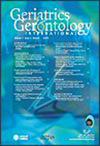Application effectiveness analysis of multidisciplinary collaboration within the Enhanced Recovery After Surgery concept in elderly patients undergoing hip fracture surgery
Abstract
Aim
Hip fractures in the elderly pose significant health challenges, with high rates of morbidity and mortality. Enhanced Recovery After Surgery (ERAS) protocols offer a multidisciplinary approach, potentially improving outcomes in this demographic. Prior studies have examined ERAS in hip fractures, but important questions remain about how a well-organized team benefits perioperative management. This study assesses the effectiveness of ERAS in comparison to conventional surgical approaches for elderly patients with hip fracture.
Methods
A retrospective cohort study was conducted involving 203 patients aged 60–85 who underwent hip fracture surgery between January 2022 and January 2024. Patients were divided into a conventional group (n = 103) and an ERAS multidisciplinary collaboration group (n = 100). Key metrics included surgical outcomes, inflammatory response, recovery metrics, functional and mobility outcomes, quality of life measurements, readmission rates, nutritional status and psychosocial and cognitive outcomes.
Results
The ERAS group showed significantly reduced intraoperative blood loss (330.42 ± 45.36 mL vs. 350.75 ± 50.62 mL; P = 0.003), shorter hospital stays (6.65 ± 1.24 days vs. 7.32 ± 1.62 days; P = 0.001) and lowered surgical complication rates (13.00% vs. 24.27%; P = 0.040). Additionally, improvements were noted in inflammatory markers and functional outcomes, including subgroup analyses by age, quality-of-life scores and reduced readmission rates within 30 and 90 days. Psychosocial and cognitive measures also favored the ERAS group.
Conclusion
Implementing ERAS protocols with a well-organized, multidisciplinary team in elderly patients with hip fracture significantly improves perioperative and postoperative outcomes. Geriatr Gerontol Int 2025; 25: 1089–1096.


 求助内容:
求助内容: 应助结果提醒方式:
应助结果提醒方式:


